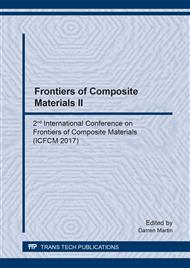p.89
p.93
p.98
p.105
p.110
p.115
p.120
p.125
p.130
Ecological Hydrophobizing Admixture in Special Purpose Concretes
Abstract:
Nowadays, on the construction market, there are offered agents for concrete hydrophobization. In most cases, these are preparations that are applied on surfaces of already existing elements. The main disadvantage of such agents are strictly specified conditions, under which they can be applied. It is not recommended to apply the preparations for the elements under water level, exposed to contact with water under pressure, and with visible cracks and scratches [1, 2]. The article presents the results of tests of an innovative agent for concrete hydrophobization that has not disadvantages of the currently applied materials – application of the developed solution takes place at the stage of creating concrete mix. The preparation may be classified as an admixture for concretes.
Info:
Periodical:
Pages:
110-114
Citation:
Online since:
May 2018
Authors:
Keywords:
Price:
Сopyright:
© 2018 Trans Tech Publications Ltd. All Rights Reserved
Share:
Citation:


